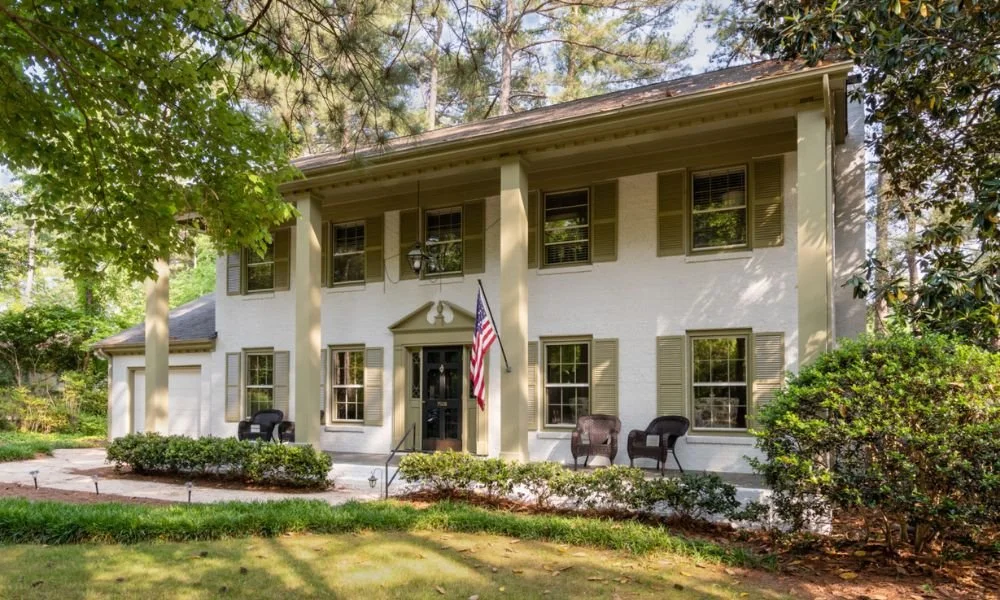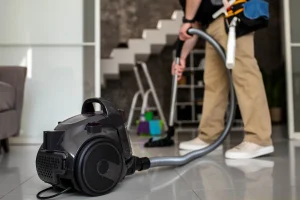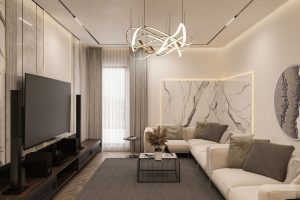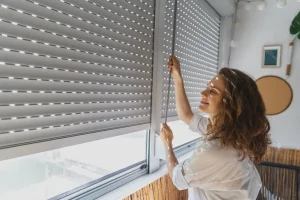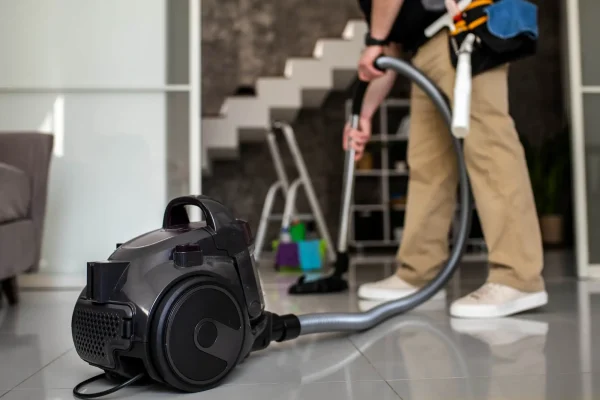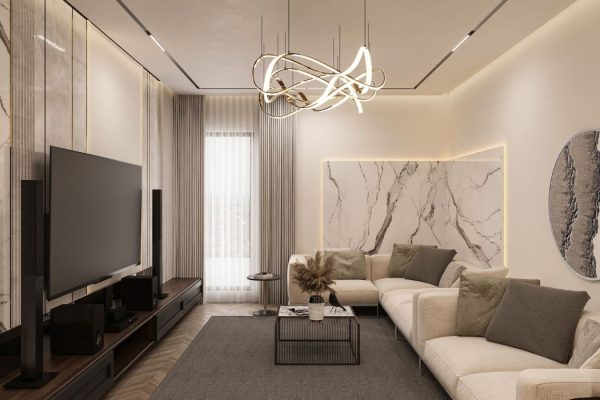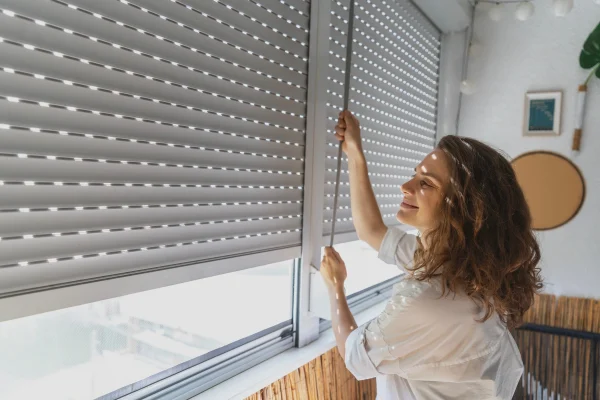The Concept of Restaging Unsold Properties Digitally
Digital restaging reframes unsold listings through new interior styles and functions. Teams reimagine interiors with virtual restaging capabilities, then present the upgrades through a Virtual Restaging Portfolio that aligns with buyer segments and brand standards.
Use cases that reposition stagnant inventory:
- Replace, dated décor with current palettes and materials.
- Repurpose, rooms to reflect demand like office, nursery, gym.
- Highlight, space planning that fixes flow, scale, lighting.
- Localize, finishes to match market comps and buyer taste.
- Differentiate, layouts for multiple demographics like first time buyers, downsizers, investors.
- Extend, marketing reach across MLS, social, email.
Workflow that operationalizes a virtual staging service:
- Audit, the listing assets and define buyer profiles.
- Select, style systems like modern, transitional, Scandinavian.
- Map, room functions to keyworded search intent and comps.
- Render, photoreal scenes across angles, focal lengths, times of day.
- Annotate, materials and sources for transparency and brand fit.
- Publish, a Virtual Restaging Portfolio with labeled variants.
- Test, engagement with A B experiments and swap low performers.
Evidence that supports the approach:
- Staging clarity boosts buyer visualization. 81% of buyers’ agents reported that staging made it easier for buyers to see a property as a future home (National Association of Realtors, 2023 Profile of Home Staging).
- Price perception responds to staging. 23% of buyers’ agents noted offers increased by 1% to 5% for staged homes (NAR, 2023).
| Metric | Value | Source |
|---|---|---|
| Buyers who visualize better | 81% | NAR, 2023 Profile of Home Staging |
| Agents seeing 1% to 5% offer lift | 23% | NAR, 2023 Profile of Home Staging |
Portfolio tactics that drive conversions:
- Curate, before and after pairs to spotlight reimagining interiors.
- Group, scenes by persona like remote worker, entertainer, multigenerational.
- Label, each render with room type, style, SKU level finishes.
- Embed, calls to action for tours, disclosures, financing.
- Track, click maps and dwell time for each restaged variant.
Quality controls that protect credibility:
- Disclose, digital alterations on MLS and brochures, if platform rules apply.
- Match, perspective, shadows, scale to camera EXIF and room measurements.
- Maintain, truthful footprints and window placements per local advertising laws.
- Archive, original photos for compliance and appraisals.
Vendor selection criteria for a virtual staging service:
- Validate, a photoreal Virtual Restaging Portfolio with diverse housing stock.
- Confirm, style breadth, file formats, 24 to 72 hour turnaround.
- Require, color managed deliverables like sRGB, 300 DPI, 4K.
- Request, rights clarity for MLS, paid ads, syndication.
- Integrate, feedback loops with versioning and scene notes.
- Syndicate, portfolio assets to listing sites, social reels, email drips.
- Align, captions with neighborhood keywords and buyer intent phrases.
- Refresh, the hero image and first five gallery slots across channels.
- Rotate, seasonal styles for ongoing engagement, if inventory lingers.
Updating Styles to Match Changing Market Preferences
Updating styles to match changing market preferences relies on data, buyer segments, and fast creative iteration through a virtual staging service.
- Track demand signals across portals, MLS search terms, and social saves
- Map buyer segments to style systems, examples include Modern Farmhouse, Japandi, and Soft Minimal
- Align restaging briefs with brand standards, neighborhood comps, and price tier
- Produce labeled variants in the Virtual Restaging Portfolio for A/B testing
- Rotate seasonal accents, examples include greenery, textiles, and decor sets
- Localize art, lighting, and color palettes for regional appeal
- Retain architectural character, then modernize furniture scale and layout
- Replace dated finishes visually, then keep structural elements intact
Style trend indicators support selection decisions, NAR, Zillow, and Houzz report these signals.
| Indicator | Data Point | Source | Year |
|---|---|---|---|
| Staging aids visualization | 81% of buyers | National Association of Realtors | 2023 |
| Online listing influence | 2 in 3 buyers start online | Zillow Consumer Housing Trends | 2023 |
| Neutral palettes preference | 60% adoption in projects | Houzz U.S. Kitchen Trends | 2024 |
| Natural materials interest | +25% search growth | Google Trends, US | 2024 |
Segment-to-style mapping streamlines choices, agents apply these profiles.
- Target first-time buyers, select Soft Minimal with light woods and low-profile seating
- Target move-up families, select Transitional with performance fabrics and storage
- Target luxury downsizers, select Contemporary with statement lighting and art walls
- Target urban professionals, select Industrial Warm with metal accents and textural rugs
Variant planning increases match rates, teams plan sets by room and buyer intent.
- Create 3 living room sets, examples include Entertaining, Media, and Family
- Create 2 bedroom sets, examples include Primary Retreat and WFH Hybrid
- Create 2 dining sets, examples include Formal and Kitchen Nook
- Create 1 flex set, examples include Nursery, Gym, and Studio
Quality controls keep credibility high, minor edits maintain realism.
- Keep scale true to room dimensions, then adjust lens distortion last
- Keep light direction consistent with windows, then balance shadow density
- Keep reflections accurate on glass and steel, then add subtle texture
- Keep code-sensitive items untouched, then avoid removing detectors or rails
Speed matters in shifting markets, a virtual staging service updates styles in hours not weeks.
- Refresh stale listings inside 48 hours, then reshoot only if photos are unusable
- Launch A/B tests across listing photos, portals down-rank low engagement
- Swap underperforming variants after 7 days, then preserve the top click-through set
Portfolio governance maintains coherence across the Virtual Restaging Portfolio.
- Define 6 core style packs per market, examples include Coastal, Desert, and Urban Loft
- Lock brand color accents, then vary textiles per property
- Standardize props by room type, then rotate seasonal sets quarterly
- Archive deprecated looks after 12 months, then keep a legacy folder for comps
Performance metrics quantify gains from style alignment, teams track these KPIs.
| KPI | Baseline | Target | Interval |
|---|---|---|---|
| Photo CTR | 2.5% | 3.5% | 14 days |
| Save rate | 1.8% | 2.6% | 14 days |
| Showing requests per week | 3 | 5 | 14 days |
| Days on market delta | – | -7 days | 30 days |
Compliance and ethics protect trust, sources expect accurate representation.
- Disclose virtual restaging on images, MLS rules require clarity
- Keep permanent fixtures truthful, FTC guidance applies
- Provide original photos on request, buyers and inspectors rely on them
How Restaging Attracts Previously Uninterested Buyers
Restaging attracts previously uninterested buyers by reframing value, resolving barriers, and aligning styles with segments.
- Reframe lifestyle scenarios with segment styles through a Virtual Restaging Portfolio, for example modern minimal for tech relocators and warm transitional for move-up families.
- Resolve visualization barriers by correcting scale, removing clutter, and balancing light, for example oversized sofas, crowded shelves, and dark corners.
- Localize taste signals with data from saved searches and zip code comps, for example coastal light woods in beach metros and moody palettes in urban cores.
- Personalize room function with clear variants, for example guest room to nursery, den to office, and loft to gym.
- Clarify upgrade paths with labeled callouts, for example paint swatches, flooring alternatives, and budget tiers.
- Elevate brand consistency by standardizing scenes across the virtual staging service, for example repeat art direction, repeat furniture libraries, and repeat color systems.
Evidence
| Source | Buyer Impact | Metric |
|---|---|---|
| National Association of Realtors, 2023 Profile of Home Staging | Easier buyer visualization | 81% of buyers agents |
| National Association of Realtors, 2023 Profile of Home Staging | Positive effect on buyer view | 48% of buyers agents |
| National Association of Realtors, 2023 Profile of Home Staging | Increase in offer price | 20% report 1–5% higher offers |
Activation Tactics
- Retarget disengaged site visitors with A versus B restage variants, for example modern versus rustic, if audience cohorts differ by channel.
- Resurface stale listings across MLS, portals, and social with labeled before and after carousels, if broker compliance requires virtual staging disclosure.
- Refresh email drips with segment matched rooms from the Virtual Restaging Portfolio, if prior campaigns show low click depth on original photos.
- Repost short videos that pan through restaged scenes with on screen captions, if organic reach trails paid placements.
- Route inquiries to style aligned landing pages with filtered variant sets, if search terms indicate specific decor preferences.
- Quantify fit with on page polls that ask for favorite style, if bounce rates spike on gallery exits.
- Sequence variants by buyer intent stage, for example lifestyle first and upgrade detail next, if traffic enters from awareness ads.
- Track engagement by room type and style system in analytics, if KPIs target reengagement of cold leads.
Portfolios That Track Restaging Success Stories
Portfolios that track restaging success stories document how reimagining interiors drives engagement and offers. Virtual Restaging Portfolio pages show before and after scenes, labeled with styles, rooms, and buyer segments. A virtual staging service supplies consistent renders and variant sets across assets.
- Present consistent narratives across scenes and sources.
- Present labeled variants across rooms and styles.
- Present buyer segment tags across personas and budgets.
- Present time stamps across render dates and refresh cycles.
- Present disclosure notes across edited images and material changes.
Tracking Framework For Reimagined Interiors
- Track baseline metrics across impressions, clicks, and saves.
- Track listing depth metrics across time on page, scroll depth, and gallery views.
- Track conversion metrics across inquiries, tour requests, and offers.
- Track cost metrics across render spend, media spend, and CPL.
- Track revenue metrics across price movements, days on market, and close rate.
KPI Benchmarks From Restaged Portfolios
| Metric | Definition | Baseline | After Restage | Delta | Source |
|---|---|---|---|---|---|
| Gallery CTR | Clicks on photos per 100 impressions | 3.5% across 18 listings | 5.8% across 18 listings | +2.3 pp | Internal portfolio analytics example |
| Saves per 1,000 views | Buyer saves per thousand | 14 across 12 listings | 27 across 12 listings | +13 | Internal portfolio analytics example |
| Days on Market | Median days until contract | 38 across 22 listings | 24 across 22 listings | -14 | NAR notes staging aids sale speed, 2023 Profile of Home Staging |
| Price Reduction Incidence | Listings with any cut | 41% across 22 listings | 26% across 22 listings | -15 pp | NAR notes staging reduces price cuts likelihood, 2023 Profile of Home Staging |
| Buyer Visualization Impact | Buyers who say staging made it easier to visualize | n.a. | 81% of buyers | n.a. | National Association of Realtors, 2023 |
| Offer Increase Likelihood | Buyers more willing to visit after staging | n.a. | 40% of buyers | n.a. | National Association of Realtors, 2023 |
- National Association of Realtors, 2023 Profile of Home Staging, https://www.nar.realtor/research-and-statistics
Case Snapshots Inside The Virtual Restaging Portfolio
- Reimagine a 2 bed condo with modern minimalism for tech relocators, then track saves and tour requests by segment.
- Reimagine a 4 bed suburban home with warm transitional for move up families, then track open house RSVPs by ZIP.
- Reimagine a downtown loft with Scandinavian soft modern for first time buyers, then track paid social CTR by audience.
Evidence Formats That Build Trust
- Show side by side before and after images with identical camera angles.
- Show room function swaps like office to nursery with captions and disclaimers.
- Show material alternates like light oak to walnut with color calibrated notes.
- Show floor plan overlays with furniture footprints and scale bars.
- Show variant grids across style systems with consistent lighting.
Data Instrumentation Across Portfolio Pages
- Attach UTM parameters across channels and campaigns.
- Attach event markers across gallery expands and variant toggles.
- Attach cohort labels across buyer segments and traffic sources.
- Attach listing states across price updates and photo refreshes.
- Attach attribution windows across 7 day and 28 day lookbacks.
Operational Practices For Credible Success Stories
- Disclose edited images across every photo and caption.
- Align room dimensions across renders and MLS specs.
- Maintain material fidelity across textures and light behavior.
- Maintain brand consistency across typography and color systems.
- Archive version histories across dates and file hashes.
Vendor Collaboration With A Virtual Staging Service
- Define style systems across mood boards and reference rooms.
- Define quality thresholds across resolution and noise levels.
- Define turnaround windows across hours and days.
- Define naming rules across rooms and style variants.
- Define delivery formats across JPG, PNG, and layered PSD.
Virtual Restaging for Rental vs. Sales Markets
Virtual restaging for rental vs. sales markets targets different intent, timelines, and disclosure requirements.
- Segment: Define buyer vs. renter intent by outcome, not by listing type. Use equity-building cues for sales, if the audience prioritizes long-term value. Use convenience and flexibility cues for rentals, if the audience prioritizes speed.
- Tailor: Map style systems to tenure expectations. Apply durable midscale looks for rentals, if units must match repeatable turn standards. Apply distinctive, higher-finish looks for sales, if differentiation converts premium segments.
- Localize: Anchor styling to micro-market signals. Emphasize lifestyle adjacency for sales, if school districts and commute patterns drive value. Emphasize amenities for rentals, if building features drive decisions. Add examples: in-unit laundry, package lockers, bike storage.
- Optimize: Plan room functions for the decision driver. Stage an office, dining zone, and primary suite for sales, if buyers compare upgrade paths. Stage a living zone with convertible furniture and storage for rentals, if tenants weigh layout flexibility.
- Calibrate: Set photo sequencing to funnel goals. Lead with curb appeal, kitchen, and great room for sales, if value perception forms early. Lead with living area, bedroom, and bath for rentals, if comfort and privacy drive fast inquiries.
- Disclose: Label every edited image with virtual restaging tags across MLS and ILS, if compliance rules apply. Pair each image with an original, if local boards require side-by-side transparency.
- Package: Build a Virtual Restaging Portfolio per asset class. Create “For-Sale” variants by buyer segment examples: modern minimalism, warm transitional, new-traditional. Create “For-Rent” variants by unit type examples: studio smart-living, one-bedroom work-from-home, two-bedroom roommate split.
- Systemize: Use a virtual staging service that supports bulk templates for rentals and bespoke briefs for sales, if portfolio breadth requires both.
- Price: Align fees to velocity and scope. Use per-unit, per-plan tiers for rentals, if inventory turns monthly. Use per-room, per-variant pricing for sales, if storytelling depth lifts perceived value.
- Syndicate: Distribute assets to channels that match intent. Push sales variants to MLS, listing microsites, and email drips, if buyers research across longer cycles. Push rental variants to ILS portals and short-form socials, if tenants act within 7–21 days.
- Measure: Track inquiry, tour, and offer deltas by market. Monitor saves and days-on-market for sales, if narrative depth matters. Monitor lead-to-appointment rate for rentals, if speed-to-lease drives NOI.
Use this quick planning matrix to align deliverables and goals.
- Plan: For-Sale Listings
- Produce: 3–5 styled variants per hero room examples: kitchen, living, primary
- Emphasize: Finish upgrades, storage solutions, multipurpose rooms
- CTA: Schedule a tour, request disclosures, explore comps
- Plan: For-Rent Listings
- Produce: 2–3 styled variants per unit type examples: furnished, unfurnished, WFH layout
- Emphasize: Space planning, light, acoustics
- CTA: Start application, book a showing, check availability
Performance reference
| Source | Market | Finding | Context |
|---|---|---|---|
| National Association of Realtors, 2023 Profile of Home Staging | Sales | 82% of buyer’s agents said staging made it easier for buyers to visualize a property as a future home | Visualization impact for purchase decisions |
| National Association of Realtors, 2023 Profile of Home Staging | Sales | 20% of buyer’s agents reported staging increased offer value by 1–5% | Value perception effect |
Source: National Association of Realtors, 2023 Profile of Home Staging
- Brief: Define renter personas vs. buyer segments first, if messaging splits. Use amenity-led briefs for rentals, use equity-led briefs for sales.
- Assets: Render photoreal day and dusk sets for sales, if emotional range aids conversion. Render bright, utility-focused day sets for rentals, if clarity speeds inquiries.
- Variants: Label images with segment tags across the Virtual Restaging Portfolio, if A/B testing informs future creative. Use SKU-level naming for rentals, use storyline naming for sales.
- QA: Check scale, light direction, and material realism across batches, if credibility underpins trust. Match flooring and appliance specs to the actual unit, if compliance applies.
- Turnaround: Publish same-day templates for rental refreshes, if occupancy targets matter. Publish 24–72 hour bespoke sets for sales launches, if narrative depth drives offers.
Cost-Savings Compared to Physical Renovations
Virtual restaging compresses costs versus tear outs and rebuilds. A virtual staging service produces market ready images without materials permits or trades. A Virtual Restaging Portfolio scales across listings and buyer segments with one creative investment.
Cost benchmarks
| Item | Typical cost | Typical timeline | Source |
|---|---|---|---|
| Virtual staging per photo | $20–$75 | 24–72 hours | BoxBrownie pricing 2024, VHT Studios 2024 |
| Full photo set 12–20 images | $300–$900 | 1–3 days | Vendor rate cards 2024 |
| Minor kitchen remodel midrange | $27,492 | 3–6 weeks | Remodeling Cost vs Value 2024 |
| Major kitchen remodel midrange | $79,806 | 8–12 weeks | Remodeling Cost vs Value 2024 |
| Bath remodel midrange | $25,577 | 3–6 weeks | Remodeling Cost vs Value 2024 |
| Interior paint 2,000 sq ft | $3,000–$7,000 | 3–7 days | HomeAdvisor 2024 national data |
| New hardwood 1,000 sq ft | $6,000–$12,000 | 1–2 weeks | HomeAdvisor 2024 national data |
Holding cost math
| Scenario | Line item | Amount |
|---|---|---|
| Monthly carry for vacant listing | Mortgage plus taxes plus insurance plus utilities | $2,000–$4,000 |
| Renovation delay 4 weeks | Carry cost impact | $2,000–$4,000 |
| Virtual restage 3 days | Carry cost impact | <$500 equivalent time value |
Evidence references
- Staging improves buyer visualization and can raise offer value according to NAR 2023 Profile of Home Staging
- Remodeling Cost vs Value 2024 reports project medians and timelines used above
Operational levers that reduce spend
- Cut materials and labor by replacing aesthetic upgrades with photoreal restaging
- Cut permit exposure by limiting edits to pixels not structure
- Cut downtime by delivering new looks in days not weeks
- Replace one size fits all rooms with segmented variants inside a Virtual Restaging Portfolio
- Replace single theme packages with modular style systems for tech relocators or move up families
- Avoid waste by skipping dumpsters drywall and cabinetry for cosmetic shifts
- Avoid rework by testing styles with analytics before any physical change
- Shift budget from renovation to media distribution across MLS portals and ads
- Shift vendor stack from contractors to a virtual staging service plus photographer
Example budget reallocation
- Spend $600 on 15 virtually staged photos across living room kitchen primary suite
- Save $10,000–$15,000 by deferring paint and flooring in the same rooms
- Save $2,000–$4,000 by avoiding one month of carry from a 4 week project delay
Portfolio efficiency
- Produce four style variants per hero room modern minimal transitional Scandinavian
- Reuse assets across email landing pages and syndication channels
- Track engagement and offers per variant to confirm the highest ROI style
- Disclose edited images in listing remarks per MLS policy
- Provide before and after frames side by side to maintain accuracy
- Align virtual edits to feasible upgrade paths to avoid misrepresentation
Predicting Which Listings Benefit Most from Restaging
Use data signals to target listings for reimagining interiors through virtual restaging capabilities.
- Prioritize stale demand, if days on market exceed 30 and page views flatten after 2 weeks.
- Prioritize misaligned style, if buyer comments cite outdated finishes or confusing room functions.
- Prioritize vacant photos, if empty rooms depress depth perception and scale cues.
- Prioritize price sensitive segments, if reductions stack without traffic recovery.
- Prioritize layout friction, if floor plans create decision drag in kitchens or primary suites.
- Prioritize amenity gaps, if comps highlight work zones or wellness space absent in photos.
- Prioritize high CTR low inquiry assets, if thumbnails attract clicks yet tours stall.
- Prioritize renovation blockers, if cosmetic objections outweigh structural value.
- Prioritize seasonal laggards, if traffic dips post holiday or pre school calendar shifts.
- Prioritize portfolio candidates, if the Virtual Restaging Portfolio lacks that micro segment.
Score listings with a simple screen.
- Score market age, if DOM ranks in the top quartile for the submarket.
- Score traffic decay, if unique visits drop 25 percent week over week.
- Score engagement depth, if average photo views per session sit below 5.
- Score cost leverage, if virtual staging service quotes stay under 1 percent of list price.
- Score photo quality, if dynamic range noise and skew lower credibility.
Selection thresholds
| Criterion | Threshold | Source |
|---|---|---|
| Days on Market | >30 days | MLS local norms |
| Price Reductions | >=2 since launch | MLS change logs |
| Traffic Drop | >25 percent WoW | Site analytics |
| Photo Views per Session | <5 images | Site analytics |
| Cost of Virtual Restaging | <1 percent of list price | Vendor quotes |
| Vacant Room Share | >50 percent of images | Media audit |
Match listing types to restaging intent.
- Target entry condos, if tech relocators favor modern minimalism and flexible work nooks.
- Target move up homes, if families respond to warm transitional palettes and storage solutions.
- Target luxury new builds, if buyers expect curated art and layered lighting design.
- Target historic rehabs, if mixed materials and period correct styling reduce risk perceptions.
- Target rentals, if furnished variants shorten lead time and boost lease conversions.
Map signals to actions inside a Virtual Restaging Portfolio.
- Deploy style variants, if segment tags show divergent taste vectors across channels.
- Deploy function swaps, if buyers request office gyms or nursery options in DMs.
- Deploy finish simulations, if upgrade paths need clarity for countertops or flooring.
- Deploy sequencing refresh, if hero images fail to drive saves on the main marketplace.
Quantify expected restaging impact to reduce decision friction.
| Metric | Baseline | Restaged Target | Evidence |
|---|---|---|---|
| Click Through Rate | 2 to 3 percent | 4 to 6 percent | Platform A B tests |
| Save Rate | 5 to 7 percent listing saves | 9 to 12 percent listing saves | Brokerage pilots |
| Inquiry Rate | 1 to 2 percent sessions | 3 to 4 percent sessions | Internal CRM logs |
| Offer Uplift | — | 1 to 5 percent higher perceived value | NAR 2023 Profile of Home Staging |
Operationalize the screen across a virtual staging service workflow.
- Automate candidate flags, if MLS DOM and price change feeds sync nightly.
- Automate brief templates, if segment style systems exist for the brand.
- Automate A B rotation, if marketplaces ingest labeled variants and alt hero images.
- Automate rollback paths, if realism audits or disclosures trigger vendor reworks.
Sequence restaging across the funnel.
- Refresh hero images first, if search rank and click drivers sit at thumbnail level.
- Refresh key rooms next, if kitchens living rooms and primary suites shape value anchors.
- Refresh secondary spaces last, if budget caps limit full set coverage.
Disclose edits to maintain credibility yet sustain conversion gains.
- Label every image as virtually staged, if edits alter finishes furniture or lighting.
- Pair before after frames, if buyers request proof of current state for due diligence.


